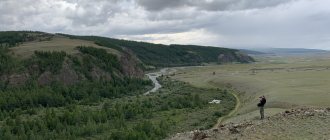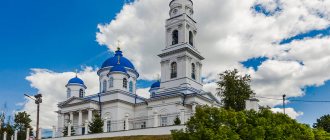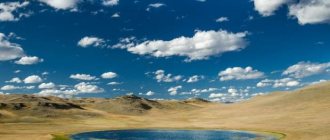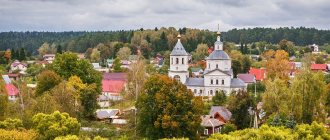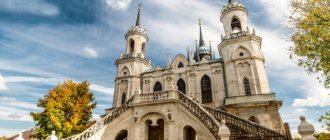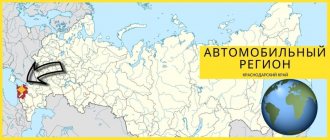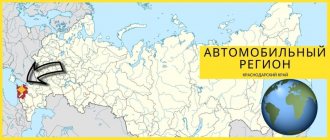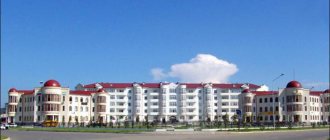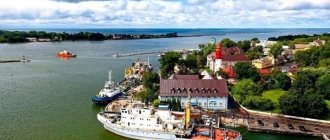Before moving to Cherepovets, cherinfo journalist Anastasia Maslova lived and worked in Kyzyl, the capital of the Republic of Tyva, for two years. In continuation of our section #at your fingertips, Anastasia wrote a fascinating longread about the mysterious Tuvans who are trying to become modern, but continue to live by raising livestock and still drive out evil spirits with juniper.
The land of shamans, Old Believers and herdsmen
Let me clarify right away: the names Tuva and Tuva are equivalent. The second is used mainly in official documents, and locals, out of habit, call their homeland Tuva.
The Republic of Tyva is part of the Siberian Federal District, bordering Khakassia, Altai, Krasnoyarsk territories and Mongolia. From Moscow to Tuva there are almost five thousand kilometers.
Tuva is a land of shamans, herdsmen and Old Believers, the purest mountain rivers and taiga forests. And these are not phrases from an advertising booklet, this is really true. In Tuva, sometimes it seems that you are somewhere not in Russia, this is especially acutely felt in regional towns where only Tuvans live.
But I will tell you about the main and largest city of Tuva - Kyzyl, where I lived for two years.
City `s history
In 1914, the region of Uriankhov (Golden Tuva) became part of Russia. In connection with the expansion of imperial possessions, it was decided to build a town here for Russian settlers, which would eventually turn into a commercial, industrial and cultural center of the Republic of Tyva.
The village was built in the Tuva Basin, at the confluence of the Big (Biy-Khem) and Small (Kaa-Khem) Yenisei, forming the Upper Yenisei (Ulug-Khem). The village was named Belotsarsk, but in 1918 it was renamed Khem-Beldir. This name also did not survive for a long time: in 1926, with the arrival of the Red Army and after the complete victory over the White Guard troops, the village received the name “Red”, which translated into Tuvan language means “Kyzyl”.
During the Second World War, city residents actively assisted the front. In 1944, Kyzyl became the administrative center of an autonomous region within the RSFSR, in 1961 the city was declared the capital of the Tuvan Autonomous Soviet Socialist Republic, and it became the capital of the Republic of Tyva in 1991.
Hidden behind the Sayans
There are two ways to get to Kyzyl: by car or by plane. There is no railway here. Most first fly from Moscow to Abakan, the capital of Khakassia, from there 400 kilometers to Kyzyl. There are flights from Abakan to Kyzyl, but it is better to go by car, because along the way there are stunning views: mountain rivers, mighty taiga, passes...
In Tuva, taiga forests are gradually replaced by steppes. The mountains appear again when we enter Kyzyl itself. The city is located, as it were, in a pit and is surrounded on all sides by the Sayan Mountains. The mighty Yenisei flows right through Kyzyl.
Population of Kyzyl
According to statistics at the beginning of 2014, 114 thousand people live in the capital of Tyva, which is 1/3 of the population of the entire republic. In two years, the number of residents of Kyzyl increased by 3 thousand. These are the official data, however, the real number of residents of Kyzyl is much higher. This creates certain difficulties, both in the housing sector and in education and health care. There are clearly not enough schools, kindergartens, and hospital beds.
Kyzyl is a city of young people
Kyzyl is a city of “young families”; every third one fits this definition. The average age of Kyzyl residents is 30 years. However, despite the “youth of families,” the birth rate has decreased by 4.6% in recent years, perhaps the reason for this is the important fact that every third marriage breaks up.
Tuvans
According to city statistics, more women live in the Tuvan capital (54%), and if in childhood the ratio between boys and girls is approximately the same, then among the working-age population the situation changes: women - 37 thousand, and men - 33 thousand. But among people of retirement age, men predominate - 7.9 thousand people, while there are 2.8 thousand women in this population group. Among the centenarians of Kyzyl who have crossed the 90th birthday mark, women again lead (82%). Children make up 31% of the city's total population, with 60% of them born to unmarried mothers.
Ethnic costume
The structure of the population of Kyzyl by nationality looks like this:
- Tuvans - 79%;
- Russians -15%;
- Other nationalities: Khakass, Kyrgyz, Armenians, Ukrainians, Tatars, Buryats, Uzbeks... – 6%
National holiday. Everyone can take part
Despite the multinational composition of Kyzyl residents and different religions (Orthodoxy, Buddhism, shamanism, Protestantism), Kyzyl can be called a city with high stability in socio-political terms. No one is oppressed here; foreign culture and traditions are respected.
In Kyzyl no one is oppressed, respecting foreign culture and traditions
As in the past, so now, Tuvinians, Russians, and Khakassians do not live in separate groups, but mixed together. This has been the case since ancient times, when the yurts of steppe nomads stood next to Russian wooden huts.
Both in the past and now, Tuvans, Russians, and Khakass live not in separate groups, but as a single family
Life without skyscrapers
There are no high-rise buildings and buildings in Kyzyl; the city is mainly built up with private houses and old five- and four-story buildings. The region has high seismic activity, but earthquakes are usually not strong. I felt them a couple of times: late in the evening the furniture in the apartment was slightly wobbly. In 2011, Kyzyl was shaking like a child, up to seven points. Some buildings began to crack. That earthquake is listed in Wikipedia and is called “Tuva”.
Construction is a pain point in the region. Federal government orders are perhaps the only source of investment in the industry, since the republic has little of its own income. Almost all major construction projects go to organizations from other regions.
Almost 90% of housing in Kyzyl is considered dilapidated or in disrepair, and the resettlement program is moving forward with problems.
Azas Nature Reserve
The facility is state-owned and is located in Todzhinsky kozhuun. It was founded in early 1985 and occupies more than 300 thousand hectares. The territory has a picturesque topography.
The reserve is located in the Todzha Basin, which belongs to three mountain systems. The territory contains several dozen large lakes, including Many-Khol, Kadysh, Azas (Todzha).
73% of the reserve is occupied by forests. There are about a thousand species of higher vascular plants, as well as bryophytes and lichens. Some species are listed in the Red Book.
The fauna of the reserve is represented by 15 species of ichthyofauna, 51 species of mammals, 230 species of birds. Some species are listed in the Red Book.
Looking for greenery
The condition of the roads is not the best. On the central streets the roadway is good, but if you turn to the side there are potholes, holes, stones. Not everywhere there are sidewalks.
The city cannot be called particularly green: there are only two parks, and there are practically no lawns in the courtyards and streets, and if there are any, the grass on them is scorched by the sun.
What really catches your eye is the lack of playgrounds in the courtyards. Locals go for walks with their children to the same two parks and to the embankment. Kyzyl is the geographical center of Asia, and the central embankment is one of the main attractions of the city. This is perhaps the only place in Kyzyl where you can walk, ride a bike (there is a bike path across the embankment) and take beautiful photos. From speakers installed on the street, throat singing is heard - the calling card of Tuva.
From the embankment there is a stunning view of the confluence of two rivers - the Big and Small Yenisei and a sacred place for Tuvans - Mount Dogee, from the top of which the entire city is visible.
Arzhaan Choigan
This healing source is difficult to access, but the most famous. It is located in the extreme northeast of Tuva (Eastern Sayan). Mineral waters flow out along the banks of Arzhan-Khem, a small mountain river, the right stream of Izig-Sug.
The number of indications for the use of this healing source is large. The composition of its waters is close to the Kislovodsk waters.
Where to go
In Kyzyl there is a National Museum where Scythian gold is exhibited. This is about 20 kilograms of gold jewelry found in the Arzhaan 2 mound in the royal tomb of Tuvan nomads. The museum and the embankment are the most iconic places in the city.
In terms of recreation in Kyzyl, everything is sad: there is only one cinema in the city with a single hall and a shabby screen.
There are many catering establishments, but the service in them is lame, and in some it is completely absent. There are several decent establishments that offer good food and offer entertainment on weekends. Apparently, competitors are trying to get rid of such establishments. When I was there, a restaurant and a nightclub were on fire.
Lake Dus-Khol
This lake is also called Svatikovo. It is located in Tandinsky kozhuun, 45 km from Kyzyl. The area of the lake is only 0.55 square meters. km. It has an oval shape and relatively flat banks; there is no woody vegetation.
There are several sanatoriums on the lake, and a camping base is also organized. It is popular for recreation among residents of the east of the republic. More than a thousand people come here in the summer. The lake attracts with its healing water - its properties are similar to the water of the Dead Sea. This lake is so salty that you can easily lie on its surface.
Shepherds are the backbone of the economy
There are no hypermarkets in Kyzyl. Due to the distance from Moscow and the lack of a railway, food prices here are higher than in central Russia. For example, the cost of a dozen eggs reaches 70 rubles. The exception is meat prices. In some stores and farm markets, beef can be bought for 250 rubles.
Meat production is the leading industry in Tuva; the lion's share of the population is engaged in livestock farming. Shepherds live in parking lots far from populated areas. Their various social and financial projects are fully supported by local authorities. Thus, in 2022, 66.2 million rubles in the republic’s budget are planned for the implementation of the governor’s project “Kyshtag for a young family”, a million - for the “Social Potato” project, 9.2 million - for the “Nurse Cow” project. The region's economy is based on agriculture and coal mining.
Indigenous people of Tuva
The indigenous people of Tuvans-Todzha live on the territory of the republic. They got their name because of the area where the largest number of representatives of this ethnic group are concentrated. This is the Todzhinsky kozhuun, which has 4442 people. They enjoy a number of government benefits, since they belong to the small peoples of the Russian Federation and the Siberia region.
The native language of the indigenous people is Tuvan, but with a Todzha dialect. The main occupation of the Todzha people is reindeer herding, as well as collecting mushrooms, medicinal plants, and berries. Hunting and fishing are poorly developed. The social and everyday life of the indigenous people is based on the fact that in the summer, women go to the forest, where they collect saran flower bulbs.
During one season, a family must accumulate at least 100 kg of this product. Men herd reindeer, provide their relatives with meat, pine nuts, birch bark and skins. Clothes are made from the last two products. Before the era of industrialization, the Tuvan-Todzha people developed carpentry and the production of forged products.
Since 1990, there has been a decline in the development of reindeer husbandry.
Currently, this type of economic activity of the indigenous people of the Republic of Tyva has practically disappeared. This is evidenced by statistical data indicating that in just 10 years the number of animals has decreased from 9 thousand to 1 thousand. By 2018, the situation was slightly leveled out and today there are about 2.5 thousand deer on the farms of the republic.
The traditional housing of Todzha residents is called chum. This is a frame of 6 strong sticks that are arranged in a cone shape. The bottom is wide, and the edges meet at the top and are tied tightly with rope. The skins of deer, which were previously slaughtered for meat, or elk, caught in hunting, are stretched on top of a wooden frame. Birch bark can also be used.
The indigenous ethnic group of Tuva has its own cultural heritage, which consists of observing the traditions of their ancestors and holding celebrations on Todzha holidays.
Namely:
- Shagaa – Tuvan New Year;
- wedding cycle - a period of time when young people get married en masse;
- illumination of the place of sacrifice is a religious event aimed at appeasing the spirits who patronize reindeer husbandry;
- Khuresh wrestling is a sporting competition in which men prove their physical strength and power;
- horse racing – combined with simultaneous archery;
- Felt Festival – marks the beginning of wool processing into clothing and footwear.
The spiritual life of the Todzhin Tuvinians is based on Buddhism and shamanism, the veneration of the spirits of ancestors, and the 4 elements of nature. Related nationalities are representatives of the Altai, Turkic, Uyghur, Sayan ethnological families. The quantitative population of Todzha residents is gradually decreasing.
Routes that bring you together
Public transport in Kyzyl is mainly Gazelles. You can count the big buses on your fingers. There are real problems with transport here: minibuses are almost always overcrowded, several people share one seat in the cabin, and those who are standing hold on to each other so as not to fall. Drivers overload their cars, which often leads to injuries.
True, the fare is low - 15 rubles. Taxis are also cheap in Kyzyl: you can cross the city for 100 rubles, the average trip is 50-60 rubles.
Soot, dust, heat and cold
The region has a sharply continental climate: you can wear shorts almost until October, and then immediately “slide into” a fur coat. In Kyzyl it can get down to -50 in winter and up to +50 in summer.
Winter in the capital of Tuva is harsh not only because of the low temperature, but also because of the terrible soot. This is because the city is located in a pit, and there is almost no wind here in winter. Houses are heated with coal, and the soot never goes away. A black curtain hangs over Kyzyl all winter. Soot is everywhere: at home, on the street, at work. Its concentration in the air exceeds the permissible level several times. They even say that soot is in the lungs of unborn children.
And in summer there are dust storms in Kyzyl. They start quickly and end just as quickly. For a few minutes, the wind raises sand and dust on the streets. It is not recommended to leave the premises at this time.
Symbolism
The republican symbols of Tuva are the coat of arms and the flag, which were approved in 1992. The coat of arms depicts a horseman dressed in the national dress Kadak. He gallops towards the rays of the sun rising from the horizon. Above them stretches a golden inscription - Tyva.
The image is framed in a shape of 5 petals, each with its own distinctive color.
The national flag is a rectangular piece of fabric. From the side of the shaft, blue and white stripes originate, moving at an angle. The blue lines in the center of the flag form one continuous stripe. The white lines run parallel to each other. The meaning of the flag lies in the rays of the sun that warm the Tuvan land.
Alcohol is not a Tuvan's friend
A local Tuvan taxi driver told a national “joke”: “If two Tuvans drink together in the evening, one of them will not wake up.” Tuvans do not have an enzyme in their blood that breaks down alcohol. However, many locals carry knives with them.
On the streets of Kyzyl you can often see people sleeping on the ground: under trees, on the asphalt, at bus stops... They resemble empty bottles thrown past a trash can.
The fight against alcoholism is a priority for local authorities. There are restrictions on the sale of alcohol. At first, they were sold only from 11 a.m. to 7 p.m.; the ban also applied on Sundays and holidays. Recently, the authorities have taken more stringent measures: alcohol is now sold from 11 a.m. to 3 p.m.
Shamanic clinic
In front of the shaman center there are two large yurts. It is impossible to miss this attraction. There are currently seven shamans working at the clinic.
The secrets of ancient methods used by shamans are passed down from generation to generation. Do you dream of learning how shamans work? The doors of the center are open to everyone. This shamanic clinic is considered one of the best in Tyva.
Address: st. Red Partisans, 18.
